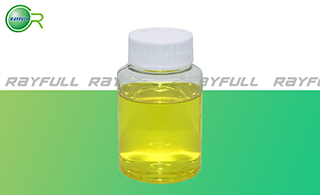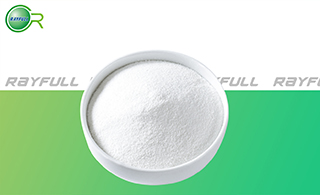Sethoxydim
    П©әМаӨ П©әМаӨ
Introduction: Sethoxydim is a selective postemergence herbicide used to control annual and perennial grass weeds in broad-leaved vegetable, fruit, field and ornamental crops. It also has indoor uses. It is available in emulsifiable concentrate formulations.
Common name: Sethoxydim
Another name: Cyethoxydim; Aljaden; Checkmate; Fervinal; Grasidim; Expand; Poast; Tritex-extra; NABU; Caswell No. 072A; Sethoxydim [BSI:ISO]; Sethoxydime [ISO-French]; BAS 9052H; etc.
Chemical name: (5RS)-2-[(EZ)-1-(ethoxyimino)butyl]-5-[(2RS)-2-(ethylthio)propyl]-3-hydroxycyclohex-2-en-1-one
Empirical formula: C17H29NO3S
Structural formula:

Mol. Weight: 327.48 g/mol
CAS No.: 74051-80-2
Specifications
Leading Sethoxydim supplier
Sethoxydim 95% TC
Sethoxydim 40% EC
Packing:
BULK PACKING
Powder: 25kg/Bag, 25kg/Drum, 50kg/Drum etc.
Liquid: 200L/Drum, 20L/Drum, 10L/Drum etc.
SMALL PACKING
Powder: 1kg/Alu bag, 500g/Alu bag, 200g/Alu bag, 100g/Alu bag, 50g/Alu bag, 15g/Alu bag etc.
Liquid: 5L/Drum, 1L/Bottle, 500ml/Bottle, 250ml/Bottle, 100ml/Bottle, 50ml/Bottle etc.
Customerized packing label
Sethoxydim FAO standard
Professional registration
HAZARDS IDENTIFICATION
Hazard statement(s)
H331: Toxic if inhaled.
H411: Toxic to aquatic life with long lasting effects.
Precautionary statement(s)
P261: Avoid breathing dust/fume/gas/mist/vapours/spray.
P403+P233: Store in a well-ventilated place. Keep container tightly closed.
Supplemental Hazard Statements: none.
MAMMALIAN TOXICOLOGY
Acute toxicity: 1) Acute oral LD50 for rats is 2676 a.i.mg/kg. 2) Acute dermal LD50 for rats is >5000 a.i.mg/kg. 3) Acute inhalation toxicity LC50 (4 h) for rats is 6.28 a.i.mg/L. 4) Skin irritation: Non-irritating to skin (rabbits). 5) Eye irritation: Non-irritating to eyes (rabbits). 6) Skin sensitization for guinea pig: Non-sensitizing.
NOEL: (2 y) for rats is 17.2 mg/kg/day; (2 y) for mice is 13.7 mg/kg/day. Other Several tests for mutagenicity of sethoxydim have produced negative results.
ADI 0-0.14 mg/kg b.w.
Classification:
WHO Classification: III (Slightly hazardous)
EC Risk Classification: Xn - Harmful: R65; N - Dangerous for the environment: R51/53
US EPA Classification (formulation): III (Caution - Slightly toxic)
ECOTOXICOLOGY
Effect on birds: Acute oral LD50 for Japanese quail is >5000 a.i.mg/kg. Effect on fish: Acute LC50 (96 h) for Rainbow trout is >170 a.i.mg/l. Effects on aquatic invertebrates: Acute EC50 (48 h) for Daphnia magna is >1.5 a.i.mg/l. Effects on algae: Acute 72 hour EC50 is 0.64 a.i.mg/l. Effects on bees: contact acute 48 hour LD50 is >10 a.i.ҰМg/bee. Effects on earthworms: Acute 14 day LC50 is >542 a.i.mg/kg.
ENVIRONMENTAL FATE
Animals In rats, following oral administration, 78.5% is eliminated in the urine and 20.1% in the faeces within 48 h. Plants In soya beans, the parent molecule is oxidised, structurally rearranged, and conjugated. Transformation to metabolites is very rapid. Soil/Environment DT50 in soil <1 d at 15Ўж. Metabolism involves molecular rearrangement, oxidation and conjugation processes.
Usage: Sethoxydim was introduced by Nippon Soda Co., Ltd. It is a post-emergence, selective, annual and perennial grass weed herbicide.
Application: Biochemistry Fatty acid synthesis inhibitor, by inhibition of acetyl CoA carboxylase (ACCase). Inhibits mitosis. Mode of action Selective systemic herbicide, absorbed predominantly by the foliage, and, to a lesser extent, by the roots. Translocated rapidly both acropetally and basipetally. Uses Control of annual (at 0.20-0.25 kg/ha) and perennial (0.2-0.5 kg/ha) grasses (except Poa spp.) in broad-leaved crops, including cotton, oilseed rape, soya beans, sugar beet, fodder beet, sunflowers, spinach, potatoes, tobacco, peanuts, strawberries, alfalfa, flax, and vegetables.
| 






